Order MarattialesLink, 1833 Higher classification Marattiales | Division Pteridophyta Scientific name Marattiaceae Rank Family | |
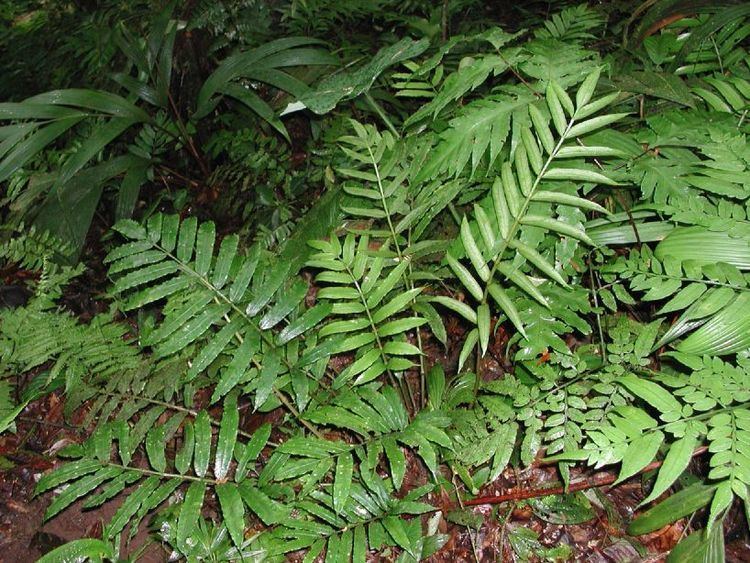 | ||
Similar Angiopteris, Psilotales, Ophioglossales, Gleicheniaceae, Angiopteris evecta | ||
The order Marattiales is a group of pteridophyta containing the single family, Marattiaceae. with six extant genera and a total of c. 135 known species.
Contents
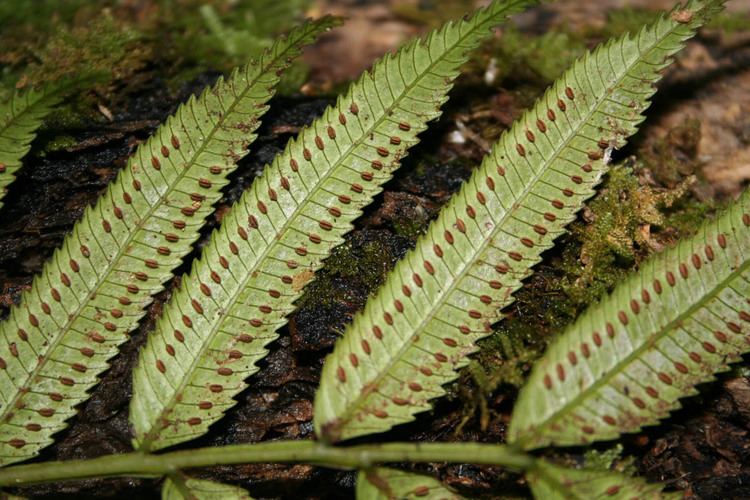
Description

The Marattiaceae diverged from other ferns very early in their evolutionary history and are quite different from many plants familiar to people in temperate zones. Many of them have massive, fleshy rootstocks and the largest known fronds of any fern. The Marattiaceae is one of two groups of ferns traditionally known as eusporangiate fern, meaning that the sporangium is formed from a group of cells vs the leptosporangium in which there is a single initial cell. There have long been four traditional extant genera (Angiopteris, Christensenia, Danaea and Marattia), but recent genetic/cladistic analysis has determined the genus Marattia to be paraphyletic, and the genus has been split into three genera, the two new ones being Eupodium and Ptisana. This fern group has a long fossil history with many extinct taxa (Psaronius, Asterotheca, Scolecopteris, Eoangiopteris, Qasimia, Marantoidea, Danaeites, Marattiopsis, etc.).
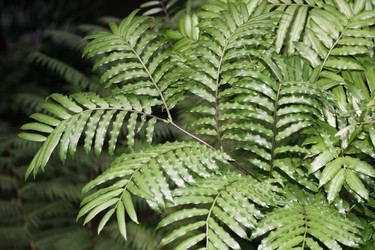
The large fronds characteristic of the group are most readily found in the genus Angiopteris, native to Australasia, Madagascar and Oceania. These fronds may be up to 9 meters long in the species Angiopteris teysmanniana of Java. In Jamaica the species Angiopteris evecta is widely naturalized and is registered as an invasive species. The plant was introduced by Captain Bligh from Tahiti as a staple food for slaves and cultivated in the Castleton Botanical Garden in 1860. From there it was able to distribute itself throughout the eastern half of the island.
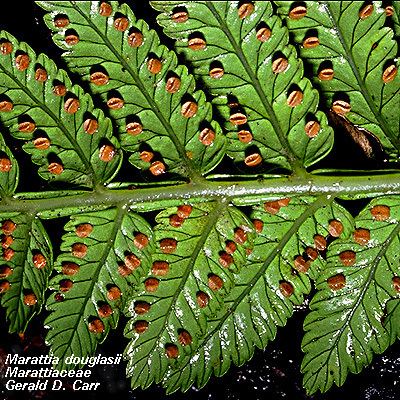
Marattia in the strict sense is found in the neotropics and Hawaii. The genus Eupodium is also neotropical, with three species. It has fronds that are 2-5 times pinnate, distinctive stalked synangia, and awns on distal blade segments. Blade division decreases towards the apex of the frond. Plants of Eupodium usually only have one frond per plant per year (sometimes two).
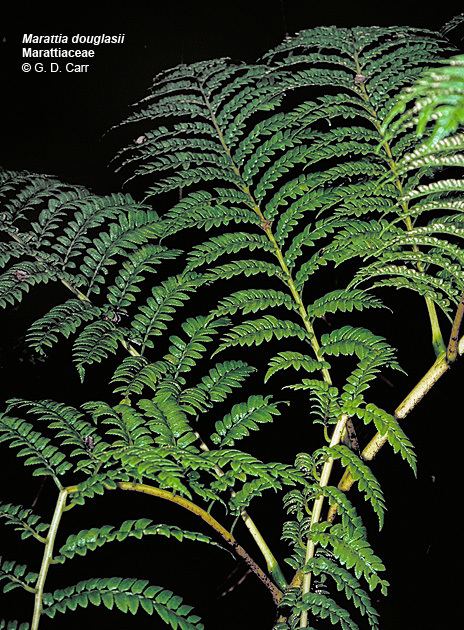
Ptisana is a paleotropical genus. These plants are 2-4 times pinnate, with fronds often comparable in size to those found in Angiopteris. Terminal segments usually have a prominent suture where they attach. The sporangia lack the labiate apertures of Marattia and Eupodium, and synangia are deeply cut. The name of the genus derives from the resemblance of the synangia to pearl barley. The king fern, Ptisana salicina, from New Zealand and the South Pacific and known in Māori as "para" now has been placed in this genus. Sometimes called the potato fern, this is a large fern with an edible fleshy rhizome that is used as a food source by some indigenous peoples.
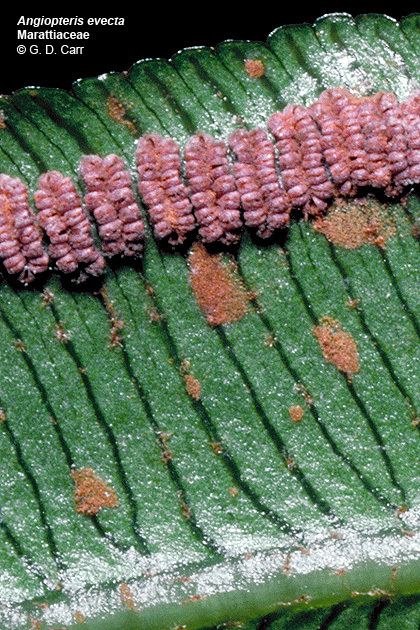
The East-Asian genus Christensenia is named in honor of the Danish pteridologist Carl Christensen is an uncommon fern with distinctive fronds resembling a horse chestnut leaf, hence the species Christensenia aesculifolia, meaning horse-chestnut-leaved Christensenia. Despite the relatively diminutive size of plants in this genus, the stomata of "Christensenia" are the largest known in the plant kingdom.
The genus Danaea is endemic to the Neotropics. They have bipinnate leaves with opposite pinnae, which are dimorphic, the fertile leaves much contracted, and covered below with sunken, linear synangia dehiscing via pores
Several other genera have been named in the Marattiaceae, namely: Archangiopteris, Macroglossum, Protangiopteris, and Protomarattia. These are currently treated as synonyms of Angiopteris.
Classification
In the molecular phylogenetic classification of Smith et al. in 2006, the Marattiales formed the single member of the class Marattiopsida. Four genera, Angiopteris, Christensenia, Danaea, and Marattia were recognized. The linear sequence of Christenhusz et al. (2011), intended for compatibility with the classification of Chase and Reveal (2009) which placed all land plants in Equisetopsida, made it the sole member of subclass Marattiidae, equivalent to Smith's Marattiopsida. The genera Eupodium and Ptisana were recognized as segregates of Marattia to render that genus monophyletic. The placement of Marattiales in subclass Marattiidae has subsequently been followed in the classifications of Christenhusz and Chase (2014) and PPG I (2016). Christenhusz and Chase placed Danaea in subfamily Danaeoideae and the remaining genera in subfamily Marattioideae, but this subfamilial classification was not taken up by PPG I.
